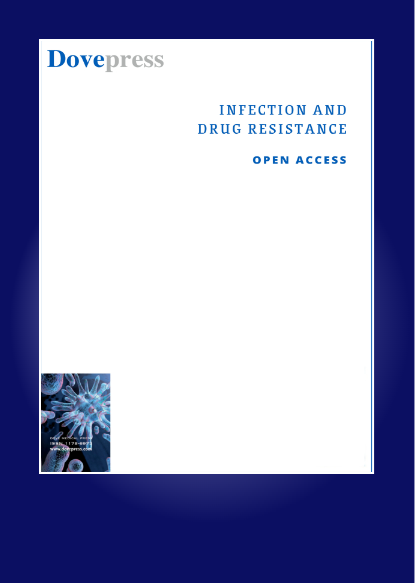评估索马里摩加迪沙 COVID-19 大流行期间结核病治疗中心就诊患者不坚持服用抗结核药物的情况及其相关因素:横断面研究
IF 2.9
3区 医学
Q2 INFECTIOUS DISEASES
引用次数: 0
摘要
背景:COVID-19 大流行的第一波和随后的封锁扰乱了全球医疗保健系统,严重影响了包括结核病(TB)护理在内的基本服务。不坚持服用抗结核药物是一个令人严重关切的问题,它会导致治疗失败、耐药性以及发病率和死亡率上升。本研究评估了结核病大流行第一波期间结核病中心患者不坚持结核病治疗的比例和决定因素:这项横断面研究于 2020 年 6 月 15 日至 7 月 30 日进行,涉及摩加迪沙三个中心的 255 名结核病患者。通过结构化访谈使用莫里斯基用药依从性量表-8(MMAS-8)收集数据,并使用描述性统计和二元逻辑回归进行分析:研究发现,大流行期间不坚持用药的比例为 34.5%。不坚持服药的主要原因包括忘记服药(33%)、感觉不适(29%)、出现副作用(18%)和害怕感染 COVID-19(16%)。与不坚持服药相关的重要因素有:年龄组 25- 34 岁(OR = 2.96,p = 0.024)和 35- 44 岁(OR = 4.55,p = 0.005)、失业(OR = 2.57,p = 0.037)、吸烟(OR = 3.49,p = 0.029)、吸烟(OR = 4.15,p = 0.034)、距离医疗机构远近(OR = 0.44,p = 0.033)、认为医疗服务提供者非常友好(OR = 0.24,p = 0.031)或友好(OR = 0.45,p = 0.023)、处于持续治疗阶段(OR = 3.2,p <0.001)和经历不良治疗效果(OR = 2.42,p = 0.003):结论:在大流行病的第一波期间,摩加迪沙不坚持抗结核治疗的人数明显偏高,因此有必要采取有针对性的干预措施来改善坚持治疗的情况。本文章由计算机程序翻译,如有差异,请以英文原文为准。
Assessment of Non-Adherence to Anti-TB Drugs and Associated Factors Among Patients Attending TB Treatment Centers During COVID-19 Pandemic in Mogadishu, Somalia: A Cross-Sectional Study
Background: The COVID-19 pandemic’s first wave and subsequent lockdowns disrupted global healthcare systems, significantly impacting essential services including tuberculosis (TB) care. Non-adherence to anti-TB drugs is a critical concern, leading to treatment failure, drug resistance, and increased morbidity and mortality. This study assessed the rate and determinants of non-adherence to TB treatment among patients at TB centers during the first wave of the pandemic.
Material and Methods: A cross-sectional study was conducted from June 15 to July 30, 2020, involving 255 TB patients at three centers in Mogadishu. Data were gathered using the Morisky Medication Adherence Scale-8 (MMAS-8) through structured interviews and analyzed using descriptive statistics and binary logistic regression.
Results: The study found a 34.5% non-adherence rate during the pandemic. Key reasons for non-adherence included forgetting to take medication (33%), feeling well (29%), experiencing side effects (18%), and fear of contracting COVID-19 (16%). Significant factors associated with non-adherence were age groups 25– 34 years (OR = 2.96, p = 0.024) and 35– 44 years (OR = 4.55, p = 0.005), unemployment (OR = 2.57, p = 0.037), smoking (OR = 3.49, p = 0.029), tobacco use (OR = 4.15, p = 0.034), proximity to a health facility (OR = 0.44, p = 0.033), perception of healthcare providers as very friendly (OR = 0.24, p = 0.031) or friendly (OR = 0.45, p = 0.023), being in the continuous treatment phase (OR = 3.2, p < 0.001), and experiencing adverse treatment effects (OR = 2.42, p = 0.003).
Conclusion: Non-adherence to anti-tuberculosis treatment was notably high in Mogadishu during the first wave of the pandemic, necessitating targeted interventions to improve adherence.
Material and Methods: A cross-sectional study was conducted from June 15 to July 30, 2020, involving 255 TB patients at three centers in Mogadishu. Data were gathered using the Morisky Medication Adherence Scale-8 (MMAS-8) through structured interviews and analyzed using descriptive statistics and binary logistic regression.
Results: The study found a 34.5% non-adherence rate during the pandemic. Key reasons for non-adherence included forgetting to take medication (33%), feeling well (29%), experiencing side effects (18%), and fear of contracting COVID-19 (16%). Significant factors associated with non-adherence were age groups 25– 34 years (OR = 2.96, p = 0.024) and 35– 44 years (OR = 4.55, p = 0.005), unemployment (OR = 2.57, p = 0.037), smoking (OR = 3.49, p = 0.029), tobacco use (OR = 4.15, p = 0.034), proximity to a health facility (OR = 0.44, p = 0.033), perception of healthcare providers as very friendly (OR = 0.24, p = 0.031) or friendly (OR = 0.45, p = 0.023), being in the continuous treatment phase (OR = 3.2, p < 0.001), and experiencing adverse treatment effects (OR = 2.42, p = 0.003).
Conclusion: Non-adherence to anti-tuberculosis treatment was notably high in Mogadishu during the first wave of the pandemic, necessitating targeted interventions to improve adherence.
求助全文
通过发布文献求助,成功后即可免费获取论文全文。
去求助
来源期刊

Infection and Drug Resistance
Medicine-Pharmacology (medical)
CiteScore
5.60
自引率
7.70%
发文量
826
审稿时长
16 weeks
期刊介绍:
About Journal
Editors
Peer Reviewers
Articles
Article Publishing Charges
Aims and Scope
Call For Papers
ISSN: 1178-6973
Editor-in-Chief: Professor Suresh Antony
An international, peer-reviewed, open access journal that focuses on the optimal treatment of infection (bacterial, fungal and viral) and the development and institution of preventative strategies to minimize the development and spread of resistance.
 求助内容:
求助内容: 应助结果提醒方式:
应助结果提醒方式:


